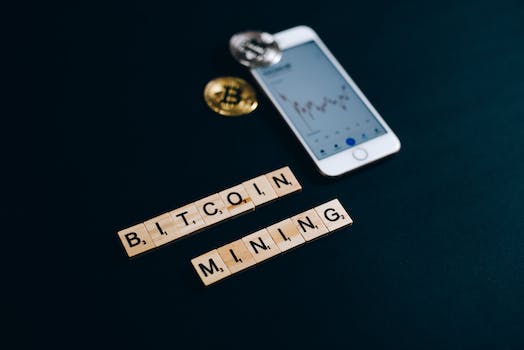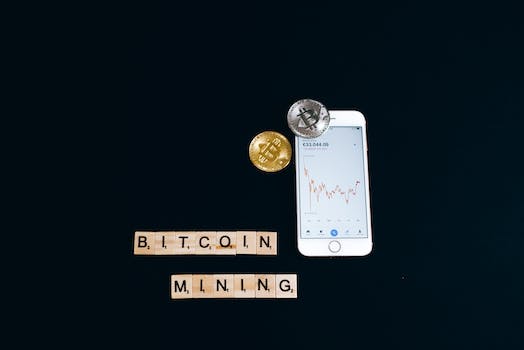Mining cryptocurrencies entails verifying and adding new transactions to the blockchain. Complex mathematical problems can only be solved using high-powered computers and specialized hardware. Miners get fresh cryptocurrency coins whenever they correctly solve these issues. In this piece, we’ll dive into what “cryptocurrency mining” actually is and why it’s so important to the long-term viability of various digital currencies.
1. Definition of Cryptocurrency Mining
Blockchain technology is the backbone of cryptocurrencies, and cryptocurrency mining is the process through which new transactions are verified and added to the blockchain. The network is protected and new currencies are generated by having powerful computers solve complex mathematical problems. The race between miners to overcome these difficulties and the prize for being the first to do so in the form of cryptocurrency is what drives the mining industry. This procedure guarantees the safety and authenticity of bitcoin transactions, which is crucial to the operation of a decentralized cryptocurrency network. Since the total number of coins that may ever be produced is often capped, mining serves an equally important function in regulating the supply of cryptocurrencies. Mining digital currencies is essential to the ecosystem as a whole, helping to ensure the decentralization, security, and stability of digital money.
1.1. What is cryptocurrency mining?
To “mine” a cryptocurrency is to verify a transaction and add it to the blockchain. It is a fundamental feature of Bitcoin, Ethereum, and other digital currencies. To ensure the safety of the network and verify transactions, “miners” employ high-powered computers and specialized hardware to solve challenging mathematical problems.
To put it plainly, cryptocurrency mining is the process of applying computer resources to the problem of solving a mathematical puzzle. Large amounts of power and computing resources are needed for this procedure.
There is a race between miners to see who can solve these riddles the quickest, with the winner receiving a block reward of newly created bitcoin. The ‘proof-of-work’ protocol is responsible for maintaining the trustworthiness of the bitcoin network.
The decentralized nature of cryptocurrencies relies heavily on cryptocurrency mining. It aids in avoiding double spending, guarantees the integrity of financial dealings, and allows for the minting of fresh coins.
The mining of cryptocurrencies, however, has become increasingly competitive and resource-intensive as their popularity has grown. Having access to affordable electricity and specialized equipment are now necessities for miners.
The environmental impact and excessive energy consumption of conventional mining techniques have prompted the development of new consensus mechanisms like ‘proof-of-stake’ in recent years. These technologies provide a greener and more efficient way to protect blockchain networks.
In general, mining cryptocurrencies is a crucial step that ensures the network stays up and running. It requires solving difficult mathematical issues, protecting the network, and minting new currencies without compromising their value or their integrity.
1.2. How does cryptocurrency mining work?
Mining cryptocurrencies involves verifying and adding new transactions to a distributed ledger called the blockchain. It’s the backbone of the digital currency system, ensuring the legitimacy of transactions and the creation of new coins. Cryptocurrencies like Bitcoin are issued and maintained without the involvement of a centralized bank or government. Instead, they are “mined” by a distributed network of computers.
The concept of a blockchain is fundamental to comprehending how cryptocurrency mining functions. Blockchains are digital ledgers that keep track of all cryptocurrency transactions. Each block in the chain records a set of transactions that have occurred since its creation. By resolving difficult mathematical problems, miners ensure the continued operation and safety of the blockchain.
The miners’ network is updated whenever a new transaction is made. After that, miners compete to solve the corresponding mathematical puzzle. Finding the solution to this puzzle will take a lot of computing power. The first miner to decipher the code and verify the transaction is rewarded with newly minted bitcoin for adding it to the blockchain.
In order to efficiently solve the complicated algorithms involved in mining, high-powered gear like specialist mining rigs or high-performance graphics cards is required. In order to protect the integrity of the blockchain and regulate the distribution of new tokens, the difficulty of the puzzles must rise as the number of miners in the network expands.
Collectively, mining cryptocurrencies is crucial for the genesis of new digital currencies, the confirmation of transactions, and the safety of the distributed ledger known as the blockchain. It provides motivation for miners to safeguard the cryptocurrency network by contributing computational power.
1.3. Importance of cryptocurrency mining
Mining for cryptocurrencies is a crucial step in the development of the digital currency industry. Mining is the term for the computational process of verifying and adding transactions to the blockchain, the distributed ledger that records all transactions in a cryptocurrency. To accomplish this, we use high-powered computers and specialized technology to calculate difficult mathematical problems.
Mining cryptocurrencies is crucial because it ensures the safety and security of the network as a whole. When a user attempts to spend the same amount of cryptocurrency twice, this is known as double-spending, and miners are essential in confirming transactions and preventing it.
Furthermore, mining is the primary way that new cryptocurrency is created. Miners who successfully complete these mathematical challenges are rewarded with freshly created coins. That way, people and businesses have an incentive to share their computing resources with the network.
In addition, bitcoin mining facilitates the equitable distribution of cryptocurrency. Competing miners gain the privilege of adding a new block of transactions to the blockchain by solving complex mathematical puzzles. Because of this distributed system, no one can regulate the issuance of cryptocurrency.
To sum up, mining cryptocurrencies is essential to the overall operation of the digital currency system. This facilitates a decentralized and equitable distribution system, guarantees the confidentiality of financial transactions, and generates new bitcoin units.
1.4. Different types of cryptocurrency mining
To “mine” a cryptocurrency is to verify a transaction and add it to the blockchain. It is an integral part of the system that makes cryptocurrencies work. Mining is a computationally intensive process since it needs the solution of hard mathematical problems utilizing high-powered computers.
Various cryptocurrency mining techniques exist, each with its own set of advantages and disadvantages. For example:
Most cryptocurrencies, including Bitcoin, use a mining method called Proof of Work (PoW) mining. To verify transactions and earn new currencies, miners engage in a competitive effort to solve difficult mathematical riddles.
Second, miners using Proof of Stake (PoS) mining do so by keeping a predetermined quantity of cryptocurrency in a cold storage wallet. The number of coins held is more important than processing power when it comes to validating transactions and earning rewards.
Third, there is “Cloud Mining,” in which miners rent mining hardware from a service provider, who also handles hardware upkeep. Remote cryptocurrency mining allows users to avoid investing in costly mining hardware.
GPU Mining, or Graphics Processing Unit Mining, is the practice of using a Graphics Processing Unit (GPU) to mine cryptocurrency. Mining cryptocurrency with GPUs is more effective than CPU mining in many cases.
To mine cryptocurrencies, specialized hardware known as application-specific integrated circuits (ASICs) is used. They are mostly employed for the mining of Bitcoin and other prominent cryptocurrencies due to their efficiency at solving mining algorithms.
The costs, energy requirements, and levels of complexity associated with various forms of mining vary widely. There are several variables to consider when deciding which mining technique to use, such as the cryptocurrency being mined, the available infrastructure, and the miner’s own preferences.
1.5. Challenges and risks in cryptocurrency mining
The term “mining” is commonly used to describe the process of verifying and adding new transactions to a cryptocurrency’s blockchain network. Complex mathematical problems can be solved by employing high-powered computers and specialized hardware. As an incentive for their computational work, “miners” can earn freshly produced coins.
However, mining cryptocurrencies is not without its difficulties and dangers. The intense level of competitiveness is a significant obstacle. More miners on the network means more complex math problems to solve, which in turn means more processing time and energy is needed. Because of this, it may be challenging for independent miners to remain profitable.
The price instability of cryptocurrencies is an additional difficulty. The profitability of mining operations is highly sensitive to the wildly fluctuating value of cryptocurrencies. There is a risk that miners will experience a situation where the value of their earnings from mining is significantly below the operational costs of their mining rigs.
Cryptocurrency miners also have to worry about the possibility of security breaches and hacking. Cybercriminals may target miners because their digital assets are frequently stored in unsecure online wallets or exchanges. Hacking can have a disastrous effect on miners’ finances and damage confidence in the cryptocurrency system as a whole.
Furthermore, there is rising worry over the environmental impact of cryptocurrency mining. Mining requires a lot of power, and some people are concerned about how long it can continue doing that. Massive mining activities impose a pressure on energy supplies and add to carbon emissions due to their high electricity consumption.
In sum, cryptocurrency mining has the potential to be successful, but it is not without its difficulties and dangers. Prospective miners should think carefully about the industry’s competitiveness, price volatility, security risks, and environmental impact before diving in.
Conclusion
In sum, “mining” is the process of verifying and adding transactions to the blockchain in a cryptocurrency network. High-powered computers are used to solve difficult mathematical problems. The miners’ efforts are rewarded with newly created currencies. Mining is a vital part of keeping decentralized digital currencies secure and functional.




